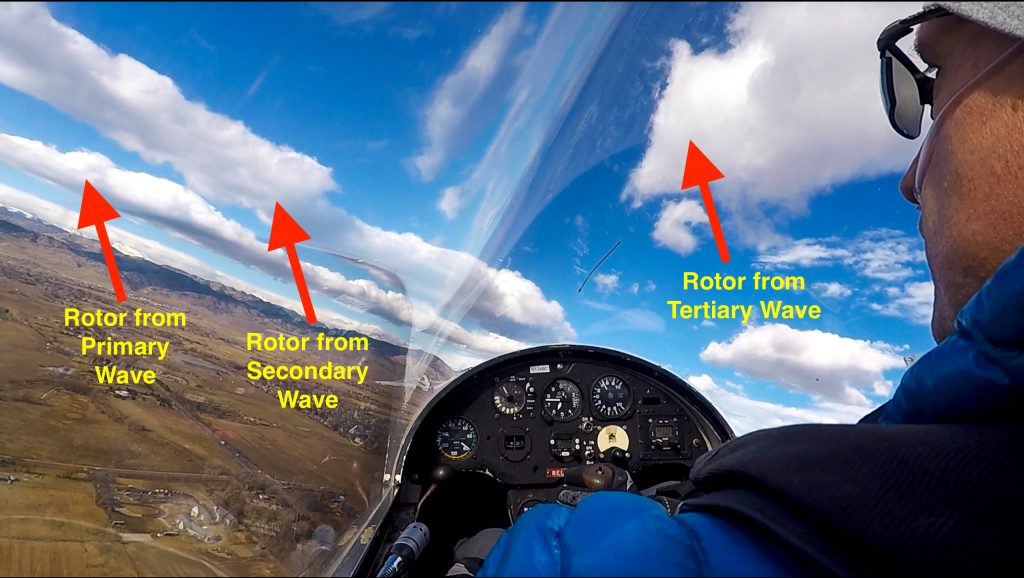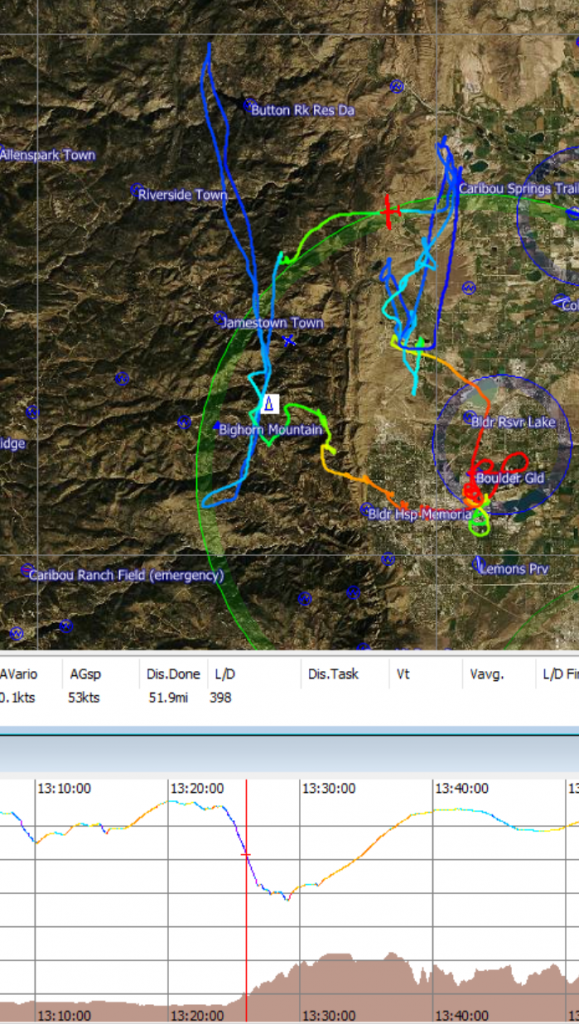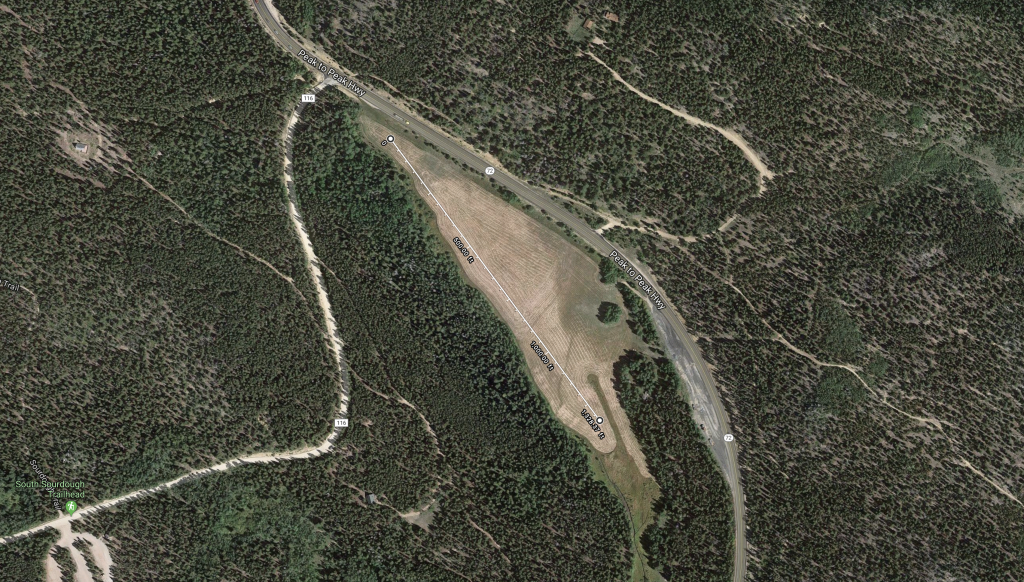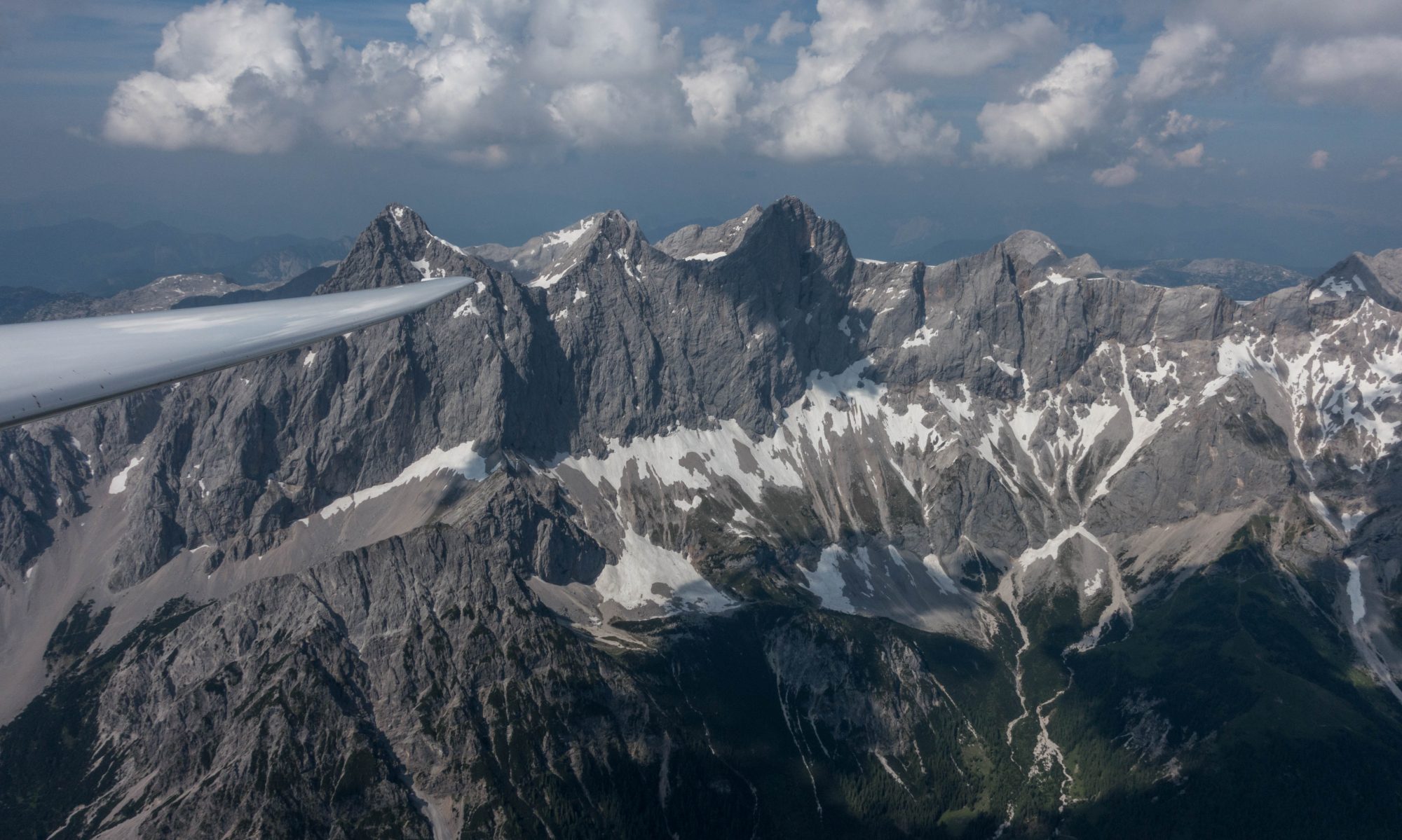It’s this time of year so I thought it would be worthwhile to reflect on the lessons from some of my past wave flights that included bruised rotor shins, have led to smarter transitions between wave bars, and even some high speed cruising.

So, here’s a quick wave flying refresher checklist:
- Know how wave theory works – it’s imperative to have a solid mental model of the wave when you suddenly need to get out of 2500 fpm sink. Will you know where to point the nose?
- Remember the lessons from hypoxia training. What are your first symptoms? Will you be able to recognize them? If you have not taken a training class, I highly recommend it.
- Dress very, very warmly – it gets effing cold up there, even if the temps on the ground are nice. Look up the forecast temperatures at altitude.
- Carefully study the weather that’s forecast throughout the day. Know the strength and direction of the wind at different altitudes. Know the moisture content of the air at different levels – will there be rotor/lenticular clouds? Know the projected location of the wave bars throughout the day and the strength of the projected lift and sink. Also know that reality can and probably will be different. Here’s an overview of weather forecasting tools for Boulder.
- Avoid flying when the winds are too strong, for the turbulence can be too violent. Good climb rates can be found if winds are moderate – cruising speeds can then be even higher than in very strong winds as the necessary crab angle to stay in lift will be lower.
- Know the rough air speed of your glider for the air in the rotor zone will be rough. Know where to expect rough air and slow down before you get there! Also, remember that rotor turbulence might suddenly surprise you even when you fly in laminar flow at high altitudes. (I have experienced rotor turbulence at 17,500 feet.)
- Know Vne of your glider at high altitudes. (Remember, flutter is a function of TAS, not IAS, so your indicated airspeed limit gets lower as you climb higher). Also know the maximum air speed for deploying the spoilers and how to do it when flying fast (very carefully) – you may need them to avoid getting sucked up into Class A airspace.
- Double check the oxygen system before you take off.
- Practice slack line removal. Slack lines will form on tow and can be severe.
- Pull all straps very tight and safely store all objects in the cockpit that could fly around (because they will). Do this again before exiting the laminar flow and returning to the rotor zone.
- Remember that the flying technique to climb in rotor lift and in wave lift is completely different from flying in thermals. If you don’t know what it is, study the theory first, then apply it. The theory works!
- Remember that wave bar transitions into the wind cost a lot of altitude (because they take much longer and you have to fly very fast). You can easily lose 6000 to 8000 feet in 3-4 minutes as you push into the wind. Be prepared for this. If possible, fly transitions where there are no clouds – the sink rate may be much lower. (Wave transitions with the wind are usually quick and the altitude loss is often a small fraction compared to upwind transitions.)
- Know how to stay out of clouds. Depending on your crab angle and the strength of the wind you might be drifting backwards relative to the ground and clouds can suddenly engulf you from behind if you’re not careful. (Not only will you not see anything, the glider can also immediately take on a layer of ice.) Rotor clouds can form within seconds where none have been before. Clouds can also close up below you while you are flying above. Always, always pay very close attention to what is happening and descend before it is too late!
- Reflect on the glide angle on final approach with spoilers fully open – then imagine what it would look like when the glide angle is twice as steep. This is about what to expect in 2000 fpm sink between wave bars. Keep this in mind when you consider the altitude necessary to reach a safe landing spot.
Here are some additional considerations specifically for Boulder:
- When wave flying from Boulder, it’s useful to review typical Boulder wave routes. Since wave lift forms mainly in relation to the topography and the strength of the wind, it is usually found in the same places. Knowing where others have found lift before can be of help.
- If you’re heading west over the foothills, e.g. when transitioning from the secondary to the primary wave bar (which tends to be anywhere between the Hogback and the Peak-to-Peak Highway), remember to maintain a safety altitude much (!) higher than what would be necessary in the same location during thermal soaring conditions.
- Before you initiate an upwind wave bar transition it is imperative that you decide upfront how much altitude you are prepared to lose before you connect with lift again. I.e., you must decide upfront at what altitude you will turn around if you are not climbing again. It is impossible to know in advance how much height you will lose during the transition and therefore you must calculate and decide your turnaround altitude in advance as necessary to always keep a safe landing place within reach! I repeat: you must do this before you begin the transition! Once you are pushing forward you may be losing 2000-3000 ft per minute, and the ground, which seemed so far below a minute earlier, will be approaching very quickly. This is not a good time to do math! Treat your predetermined altitude as a “hard deck”, in other words, once you are down to your preset decision altitude, you will turn around and not continue to push forward! This particular flight, where I lost 6,000 feet (from 17,500 to 11,500) at a maximum sink rate of 29 kts (2,900 fpm) during a 3 minute long upwind transition flown at 85 kts IAS in a Schweitzer 1-34 into a 40+ kt headwind, provides a good illustration of this concept.

- Even on strong wave days the air at the airport in Boulder is often calm in the morning due to a strong ground inversion. This often allows for uneventful takeoffs in easterly direction. Around noon, sometimes later in the day, sometimes never, the winds turn west at the surface. Westwind takeoffs in rotor conditions can be dangerous and are definitely not for the faint of heart. Landing into westerly winds is usually ok but it is imperative to arrive at the pattern with plenty of altitude and to maintain extra airspeed throughout the pattern to deal with wind shear and turbulence. If rotors touch down near the field there can be extreme sink in the pattern. Fly a close pattern and a steep final approach so you always have extra energy available. If there is a northerly crosswind component, it is good to touch down before MHG to minimize the risk of additional turbulence from buildings and vegetation along Independence Road.
- Remember that there are no good places to land over the foothills, i.e. maintaining a safe escape route towards Boulder (or another safe landing area) must be the number one priority. However, if you made a mistake and have no choice but to land in the foothills, it is always good to know the few emergency fields that do exist. These may not be good enough for you and your glider to remain unscathed but they should be good enough to safe your life. Last week I checked out one of these fields that is directly along the Peak to Peak Highway between Nederland and Boulder (see pictures below).



